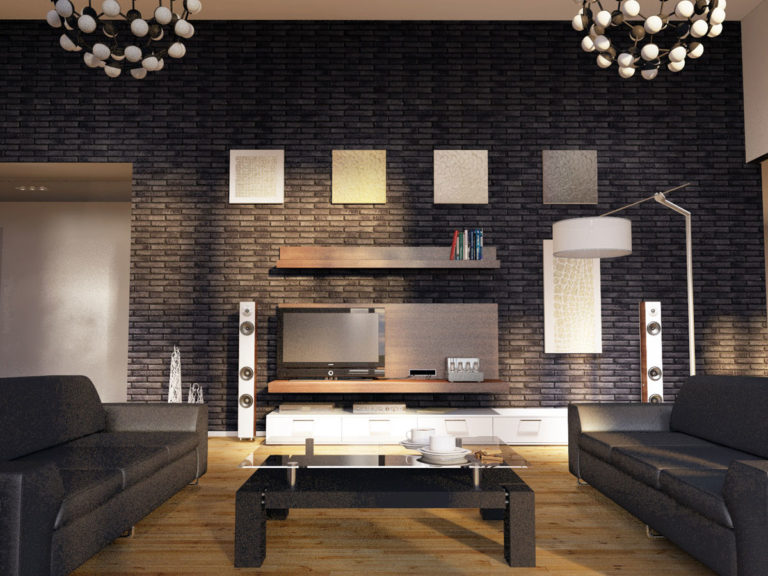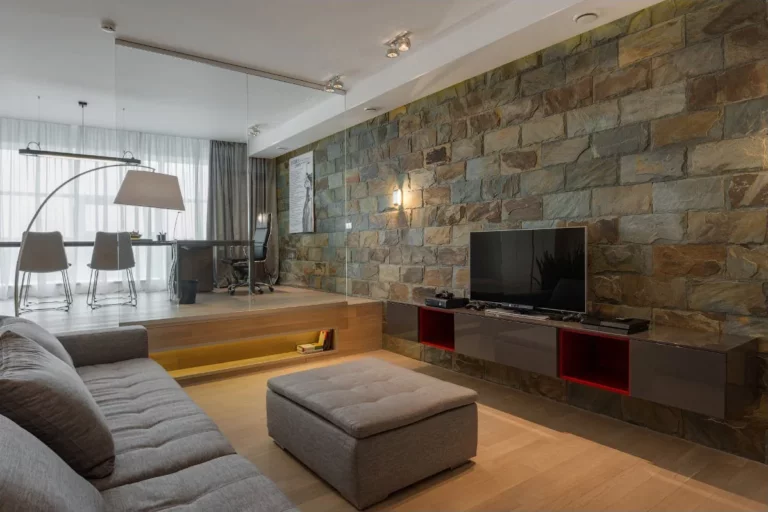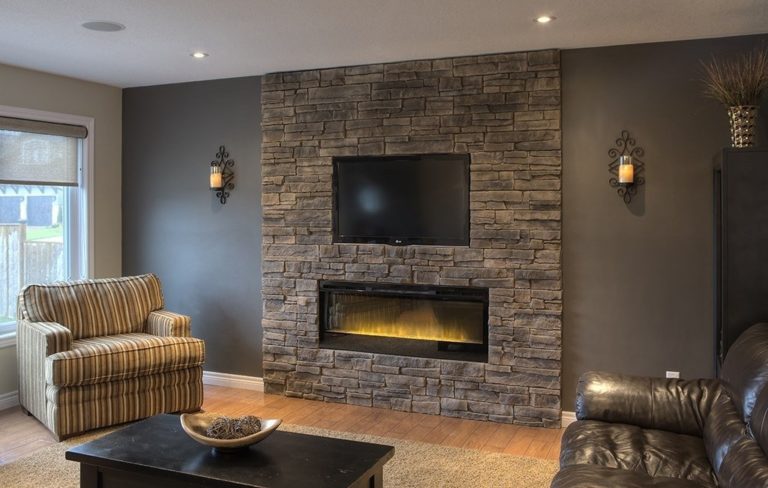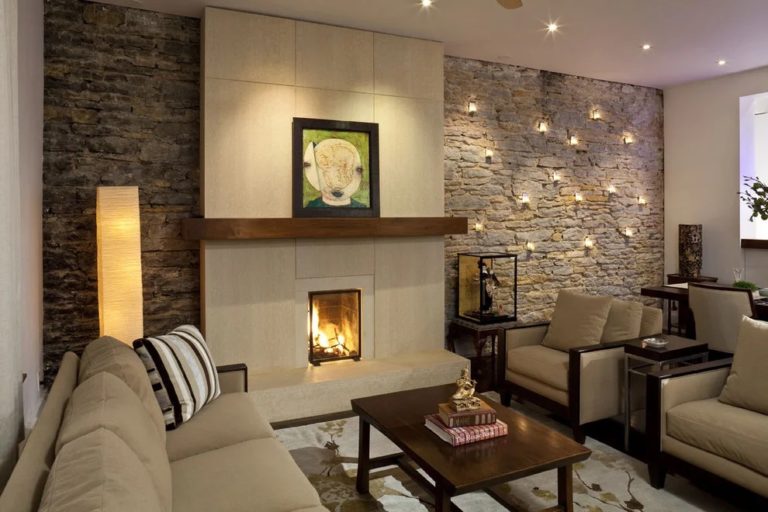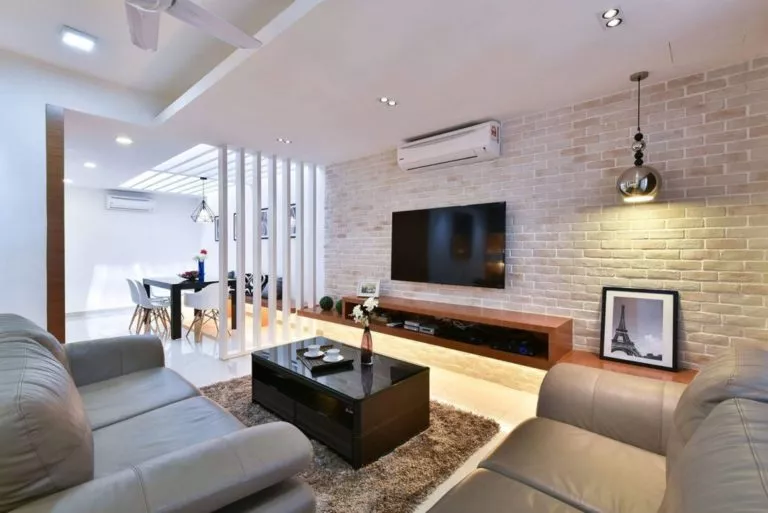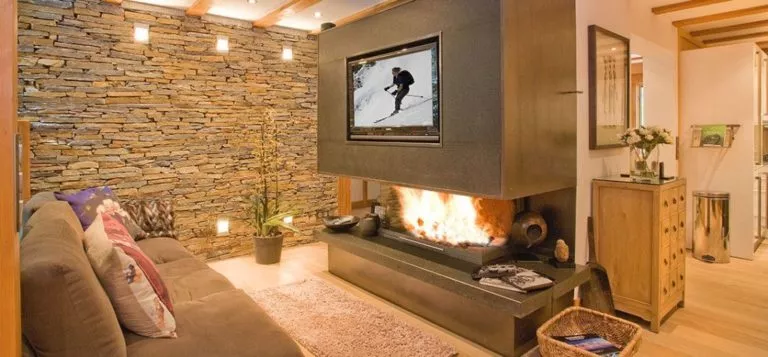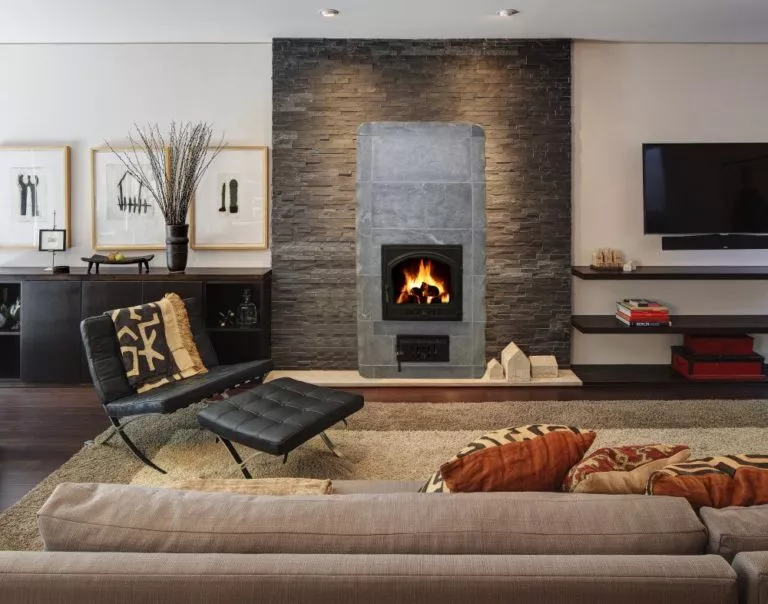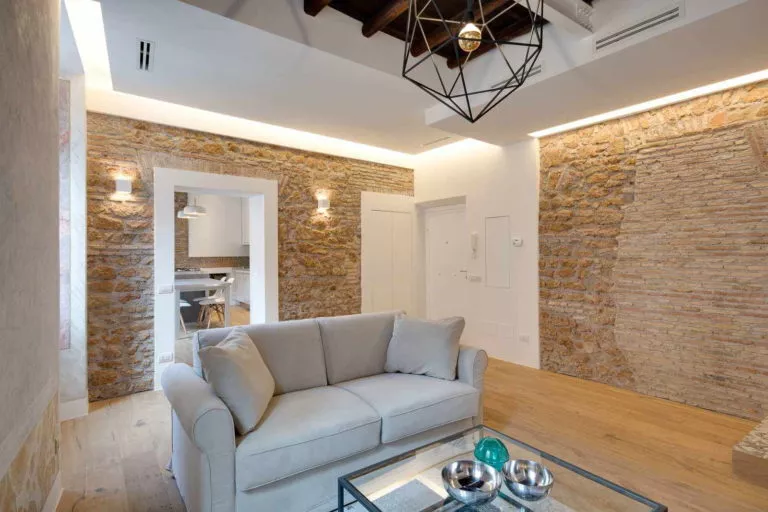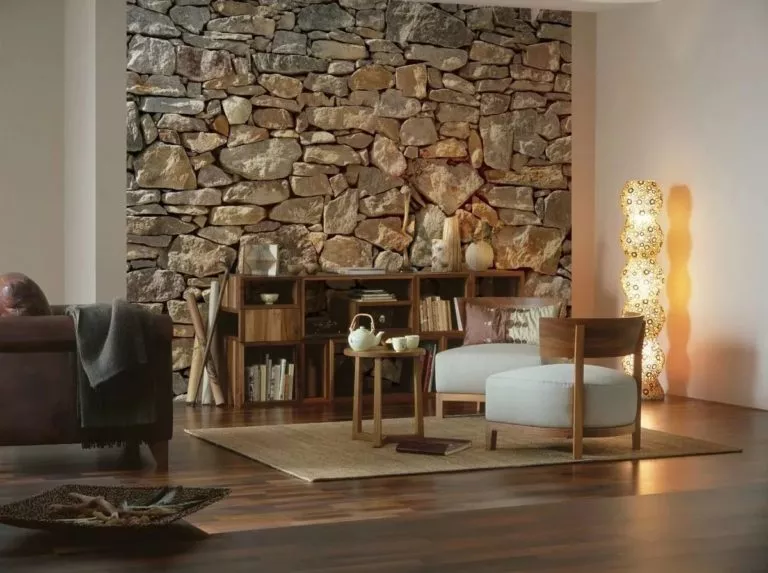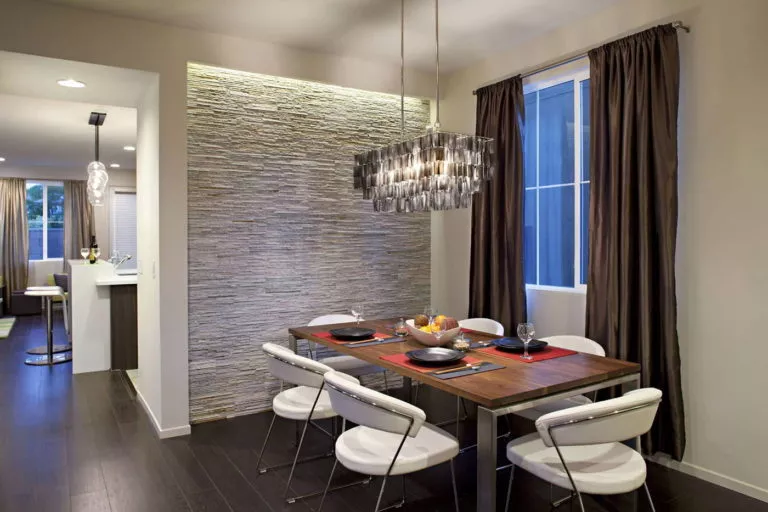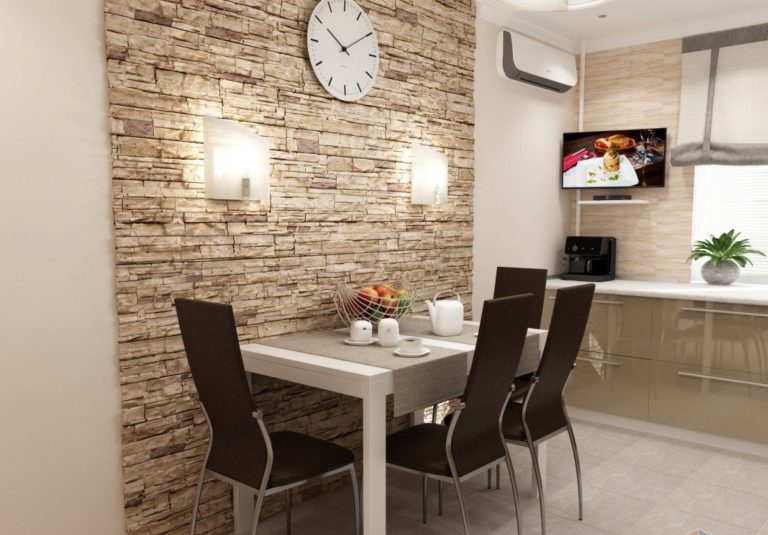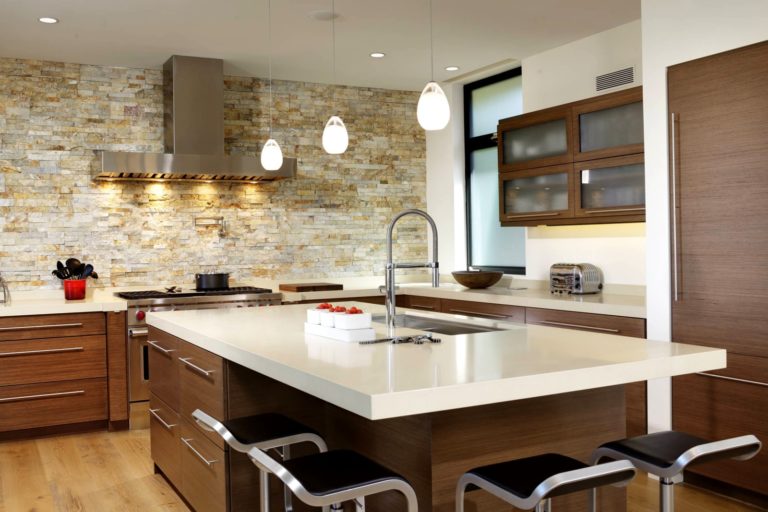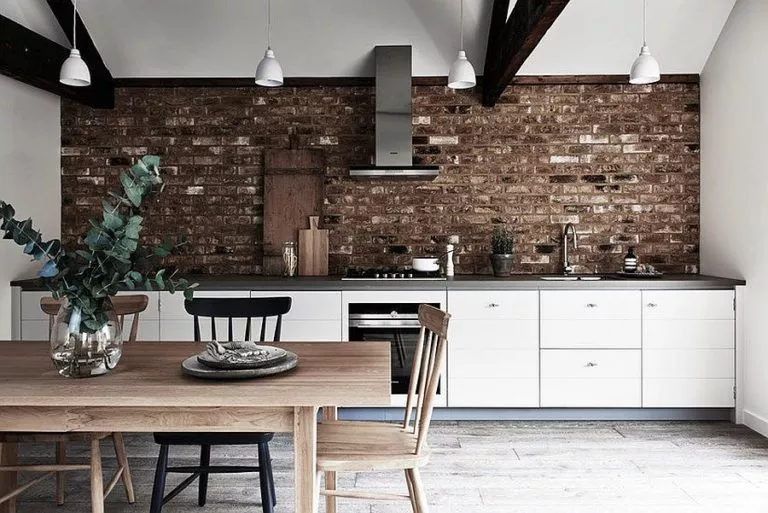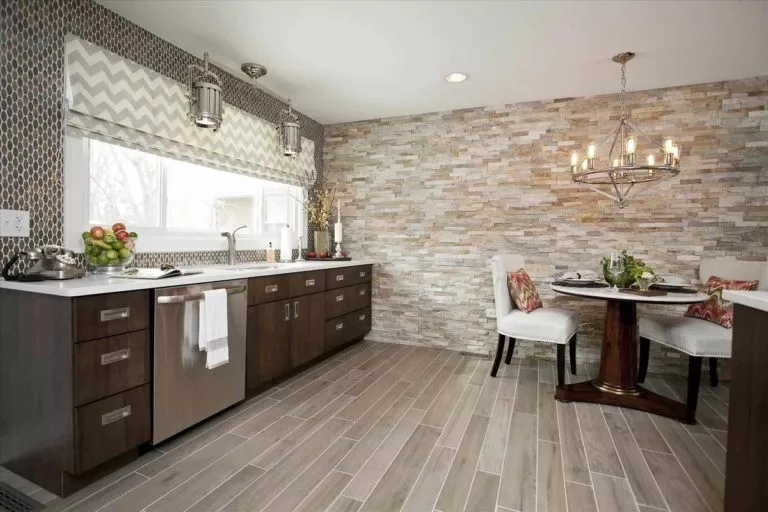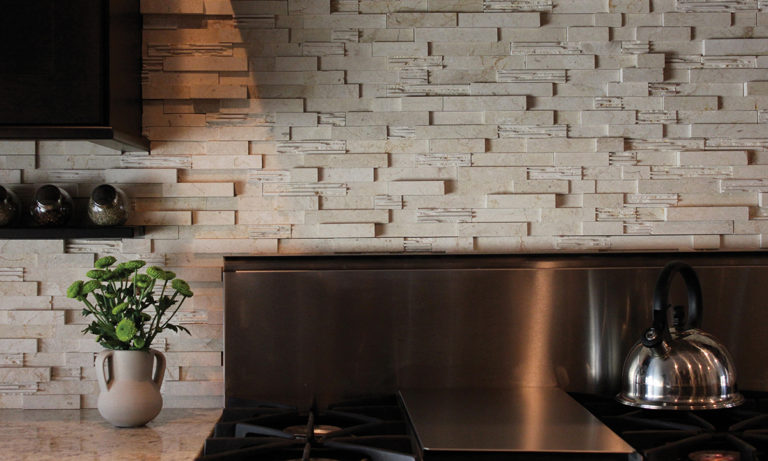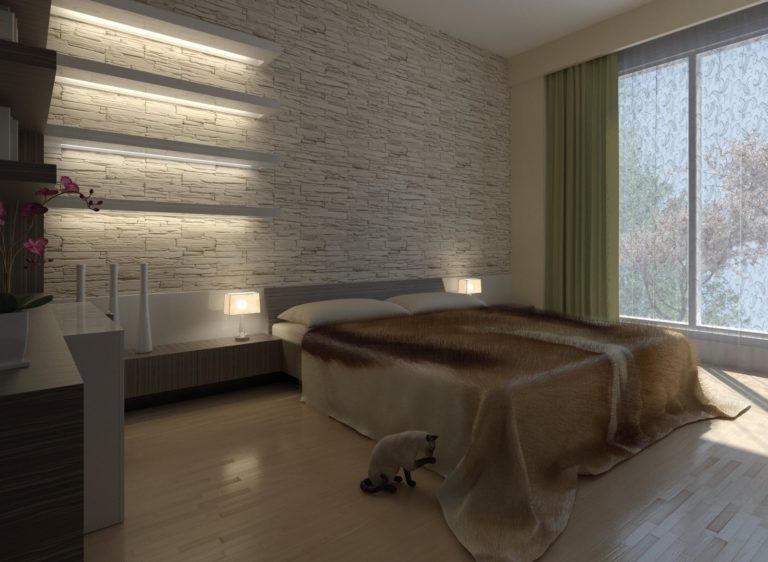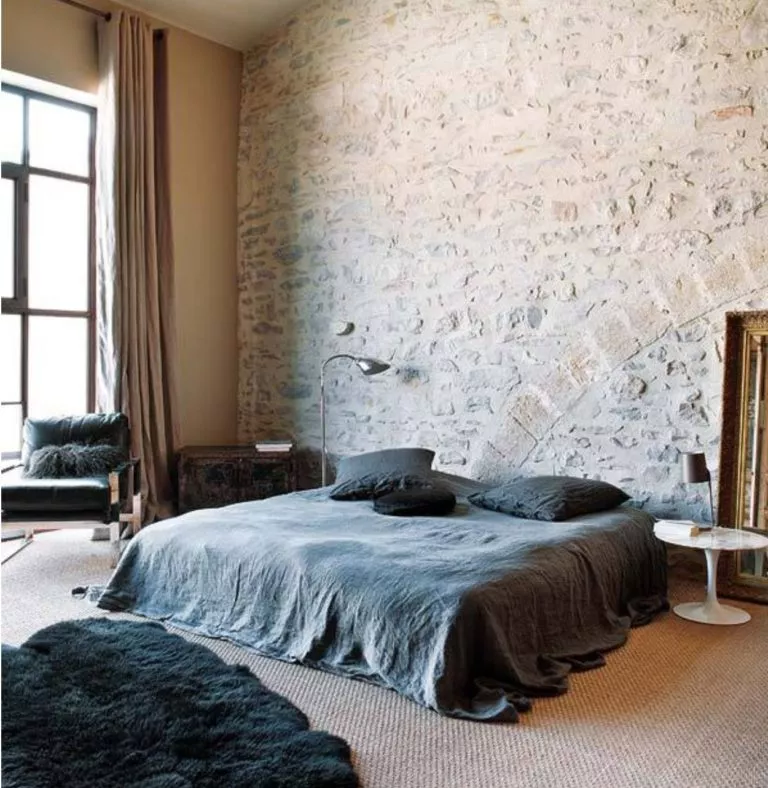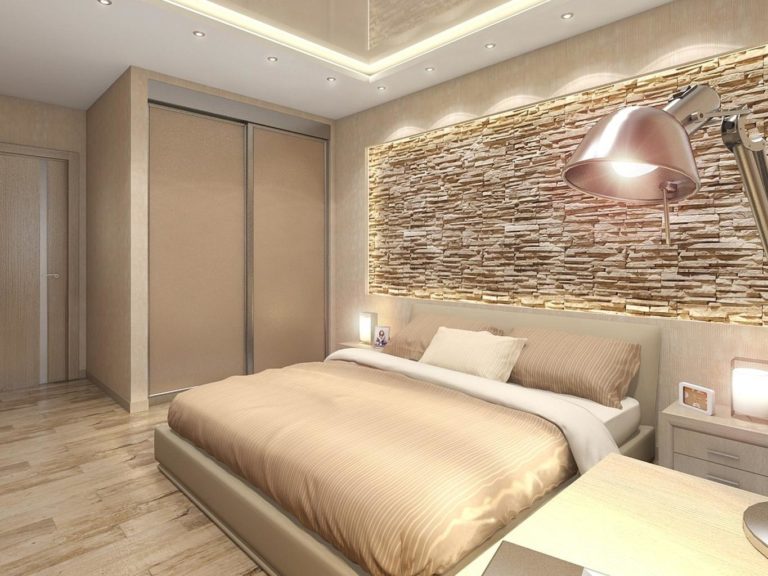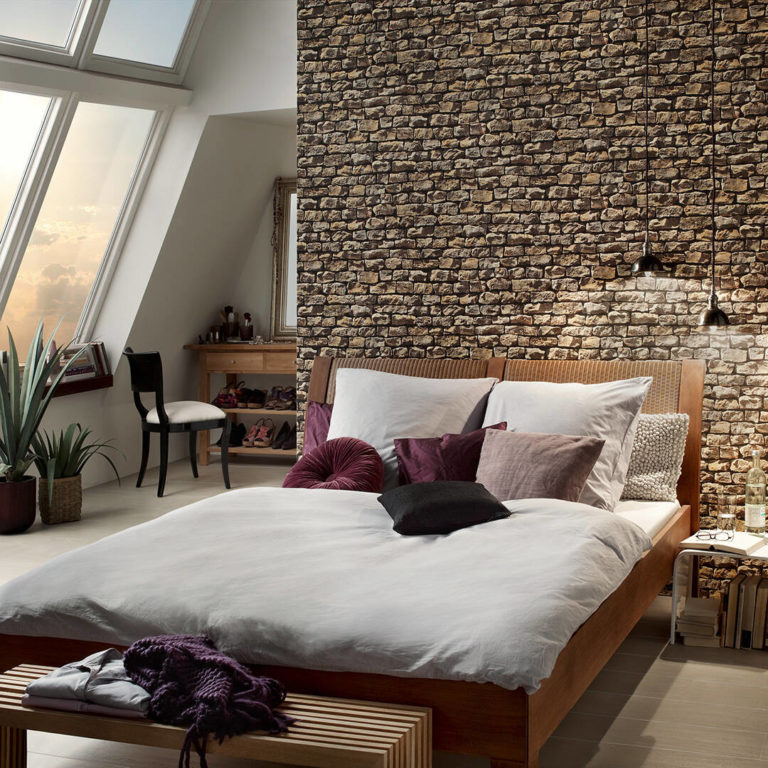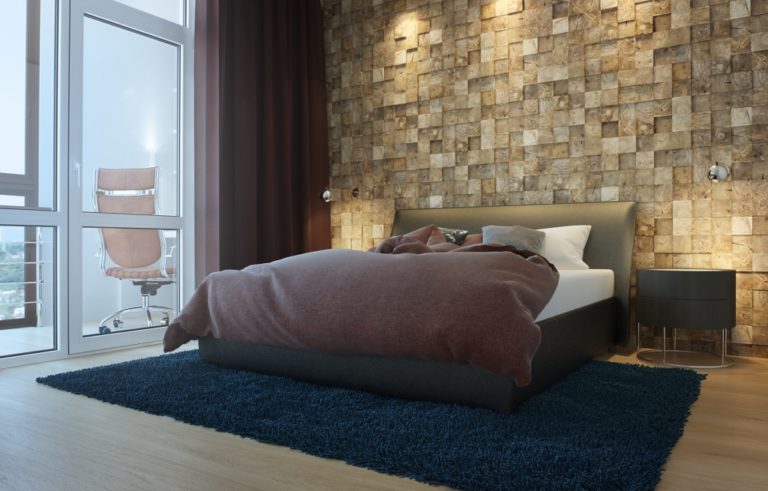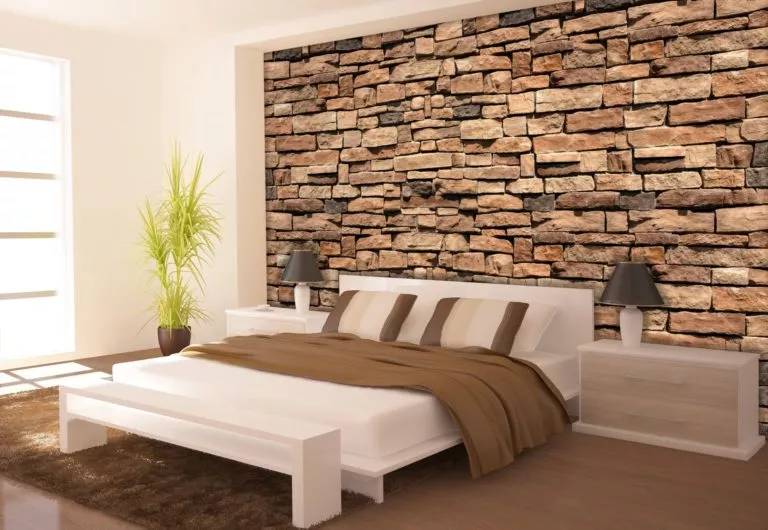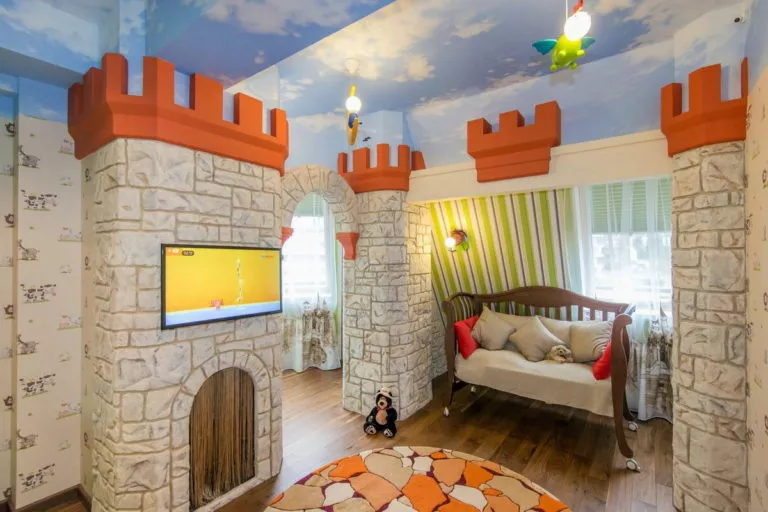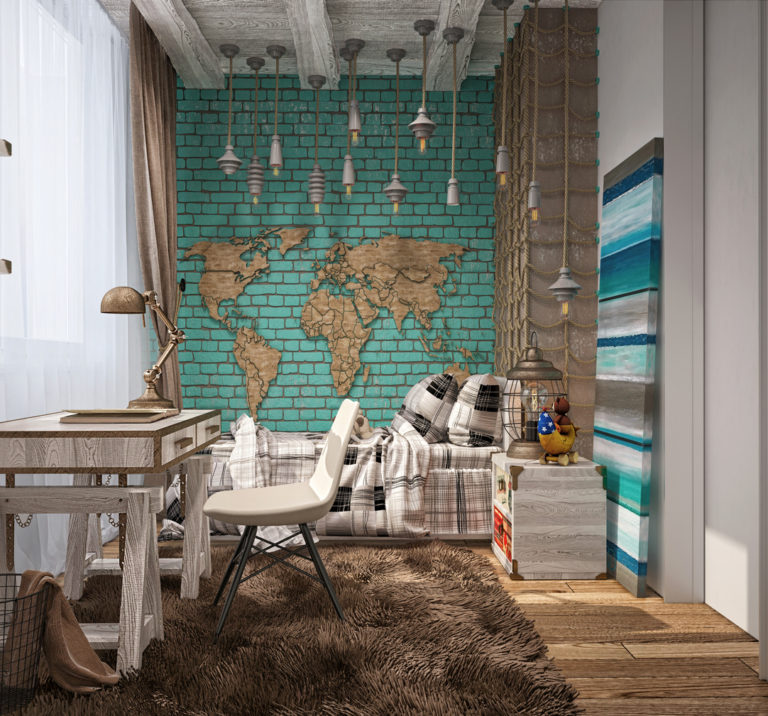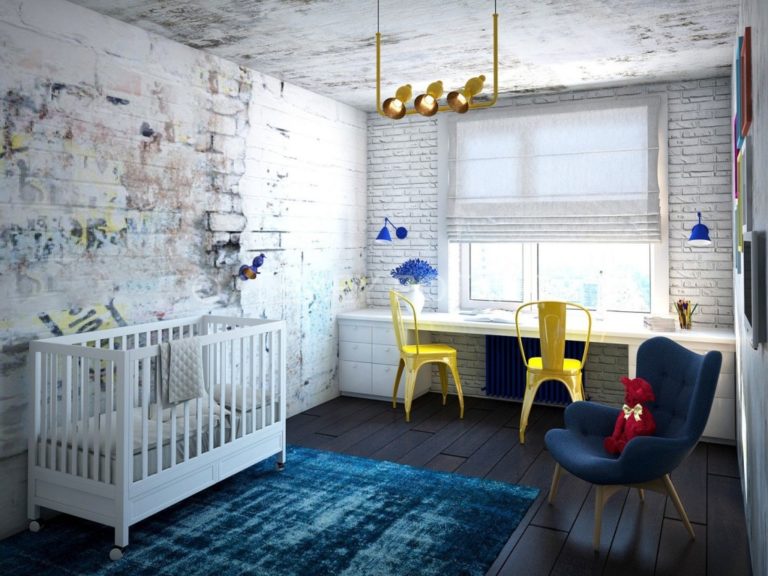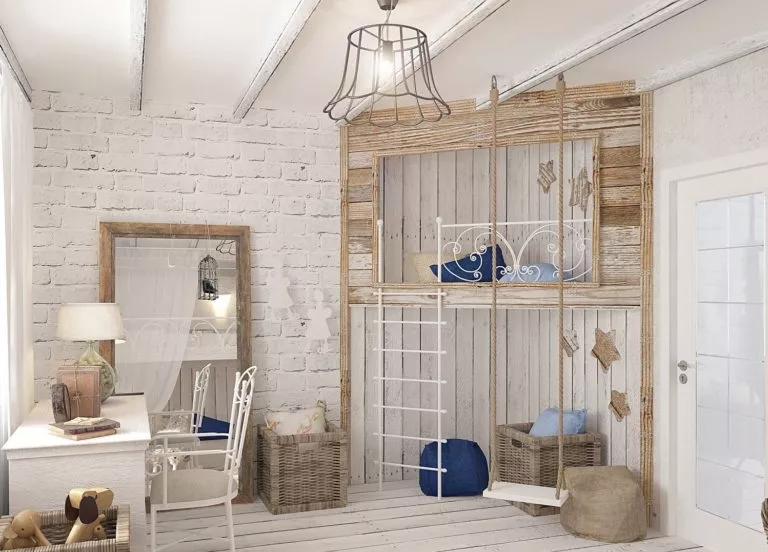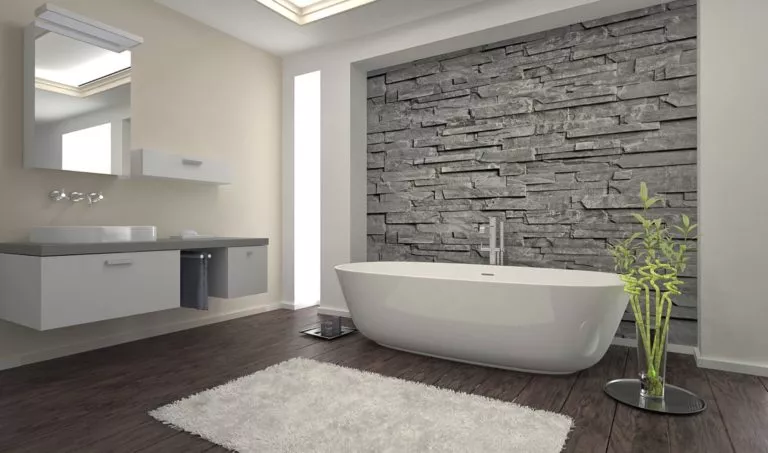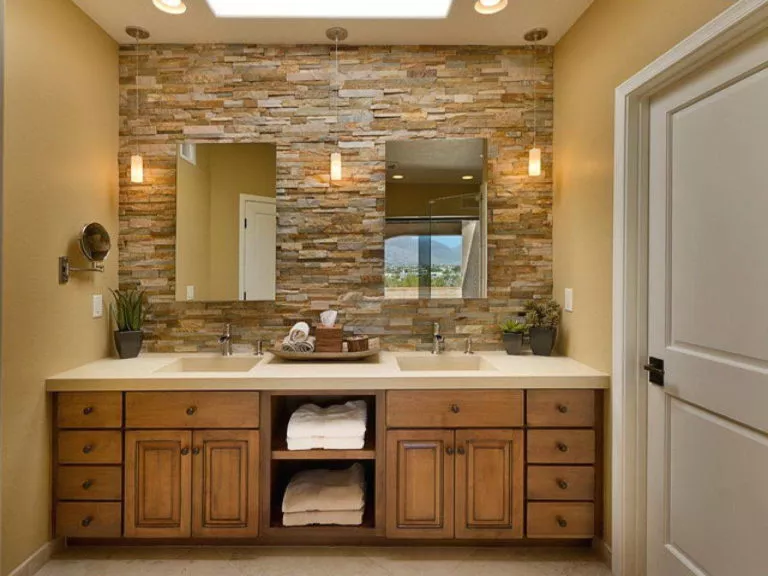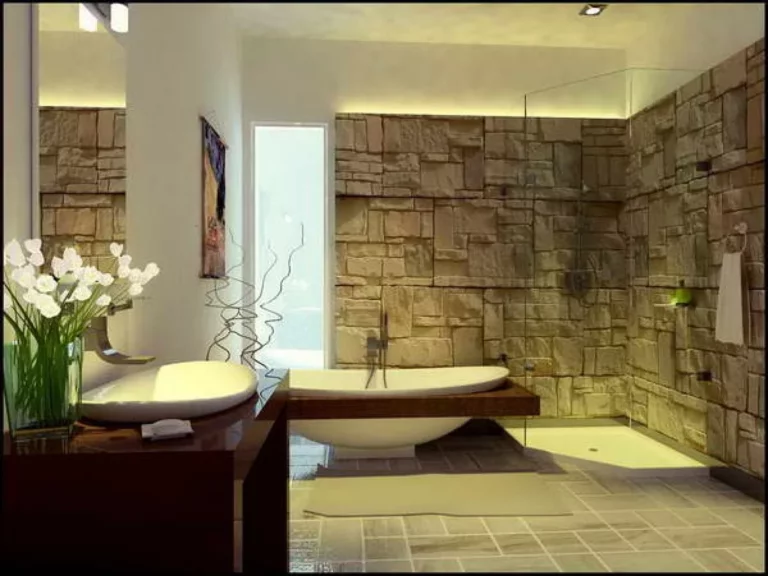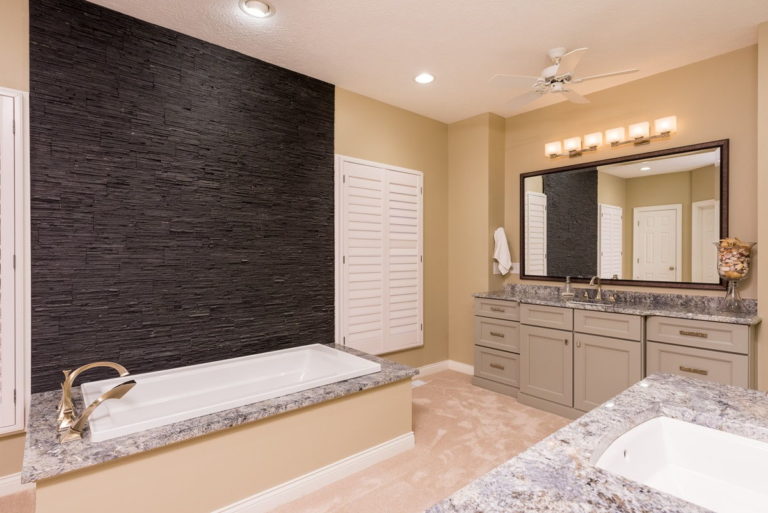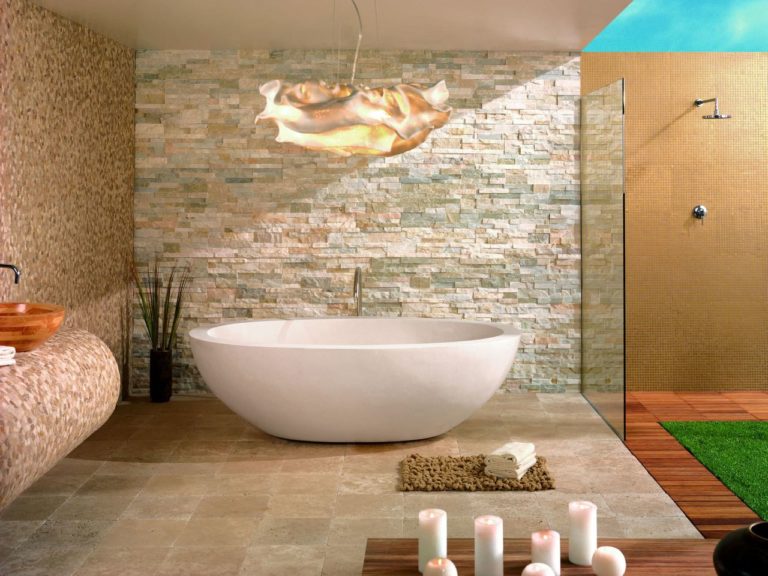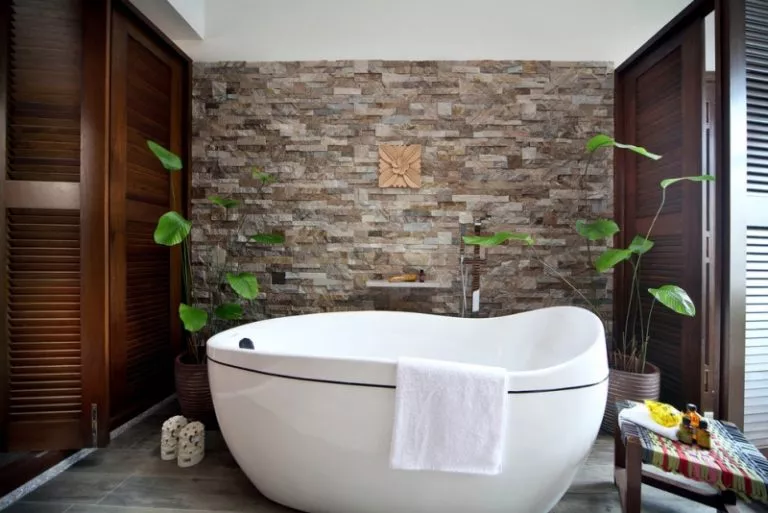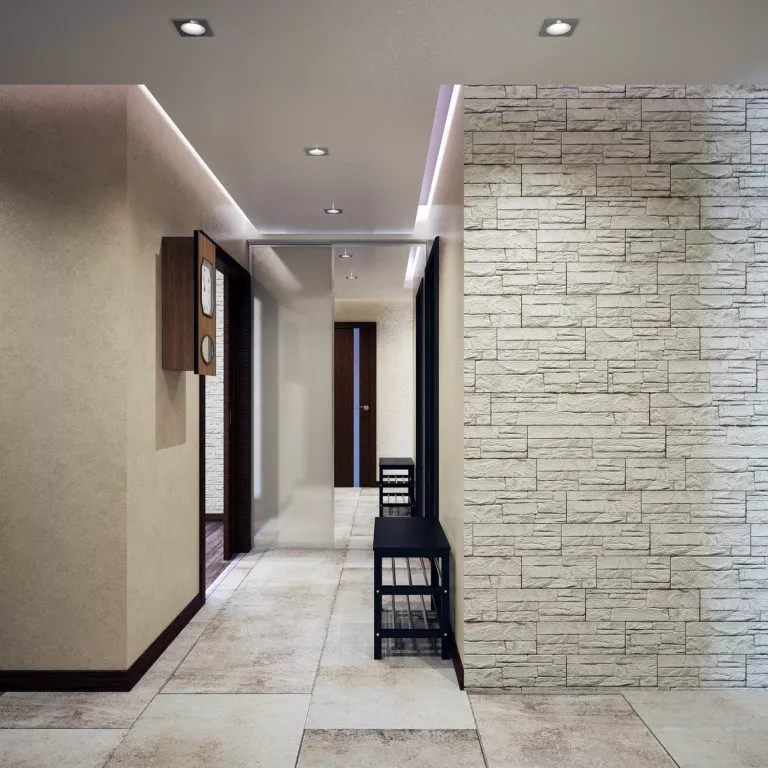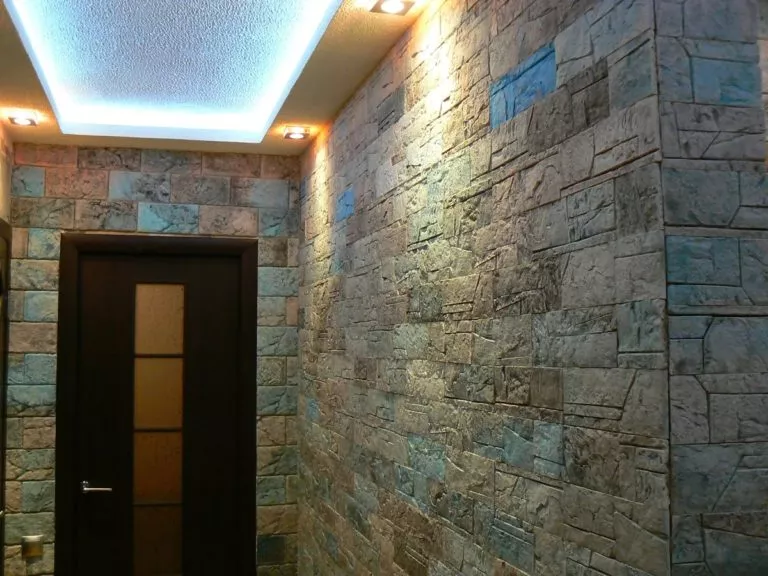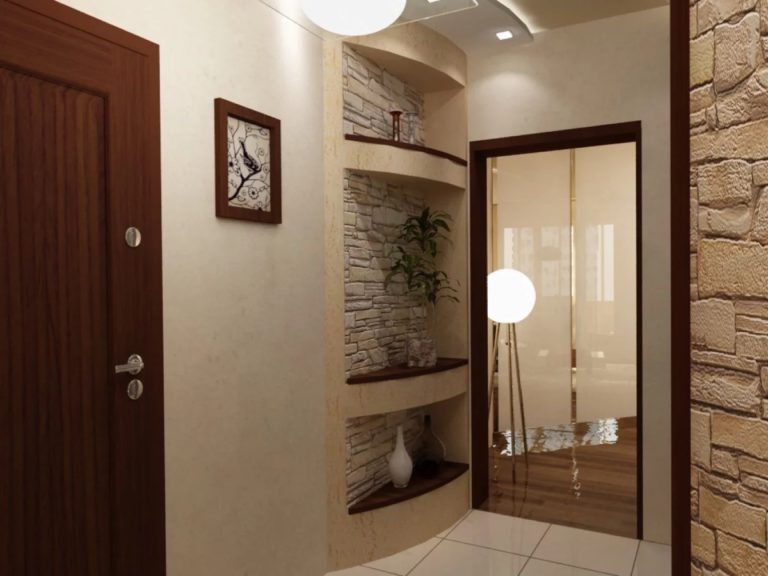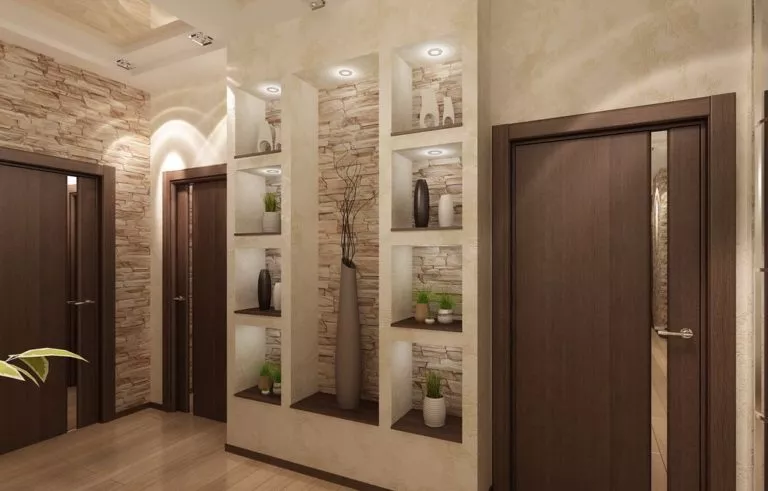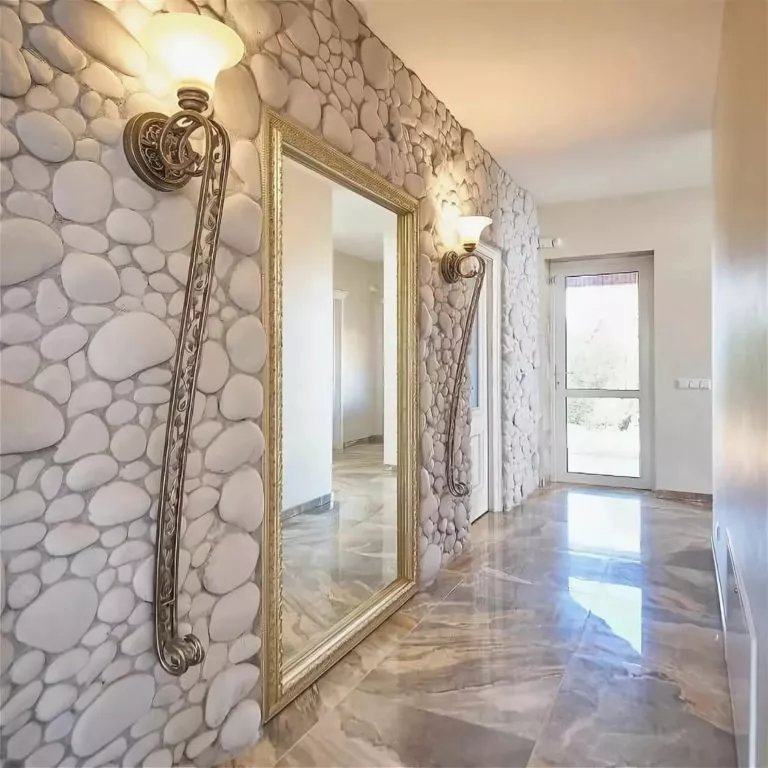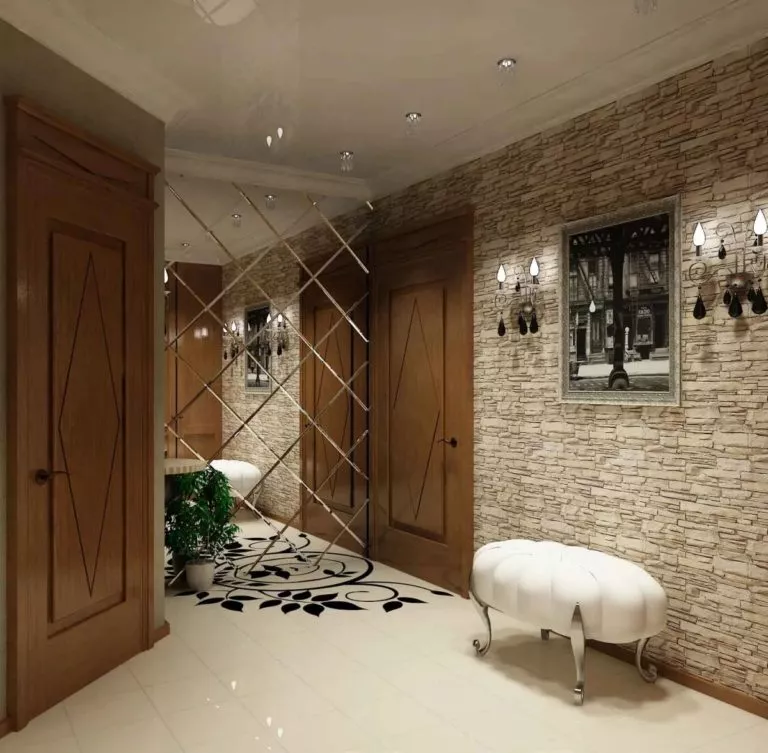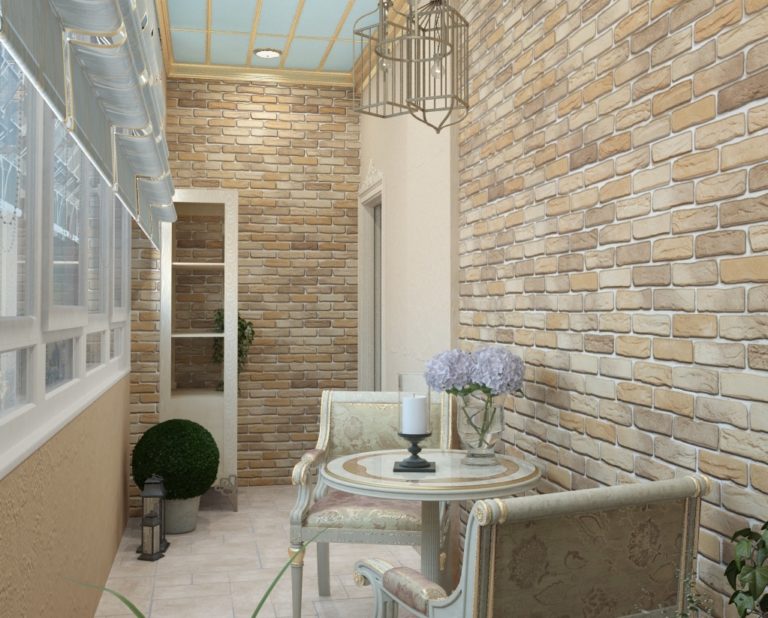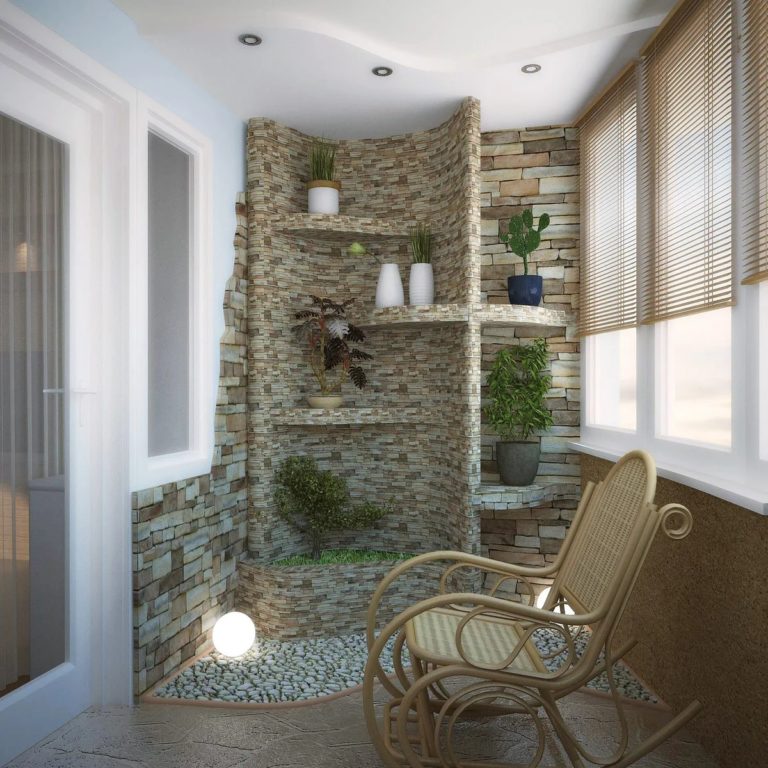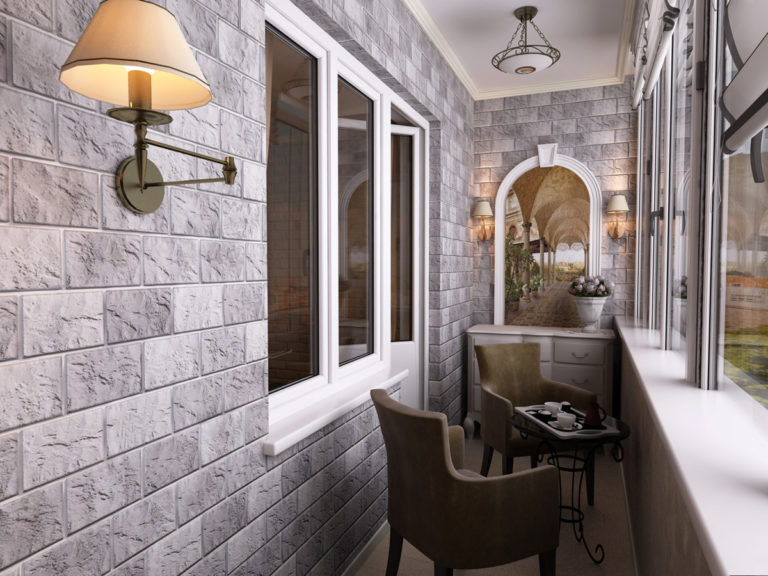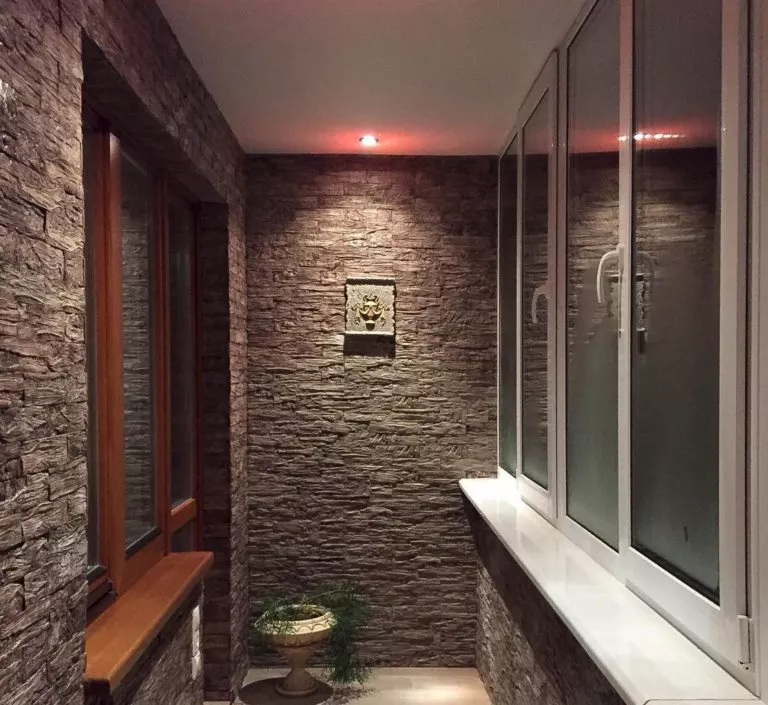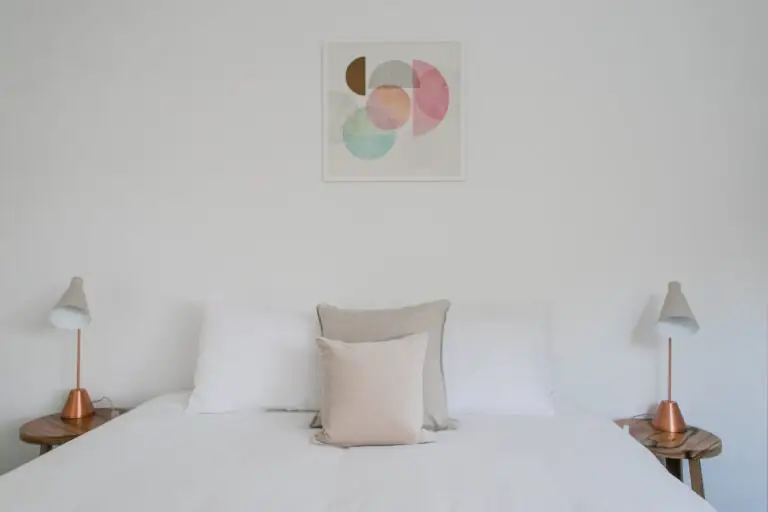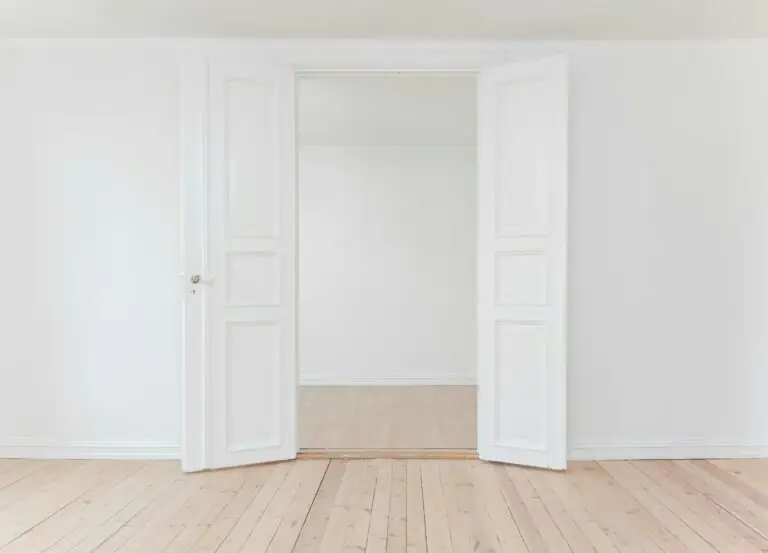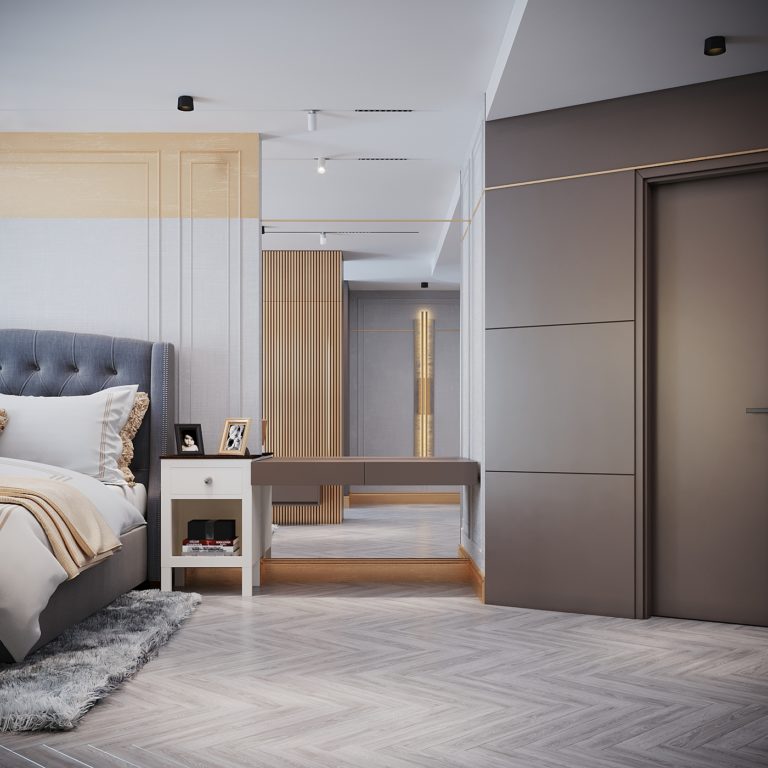Decorative stone: Wall design ideas
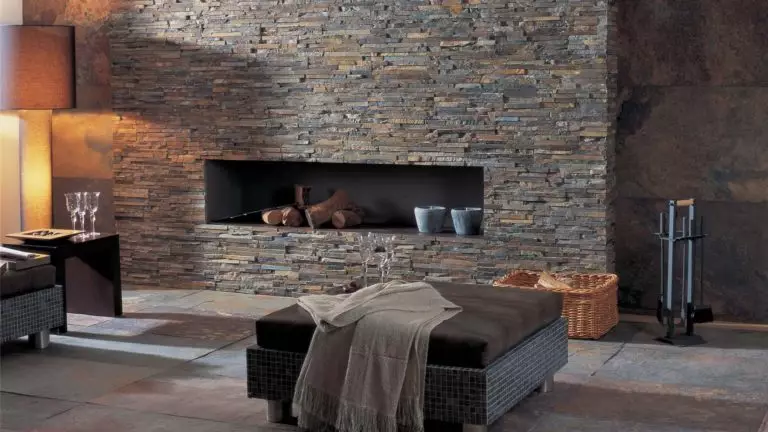
Designers continue to rely on the naturalness of texture and raw materials. In view of this, decorative stone is their favorite, secret weapon. For the most part, it is completely natural and has an expressive, self-sufficient aesthetics.
How is decorative stone different from natural stone?
The fact that it is produced by humans using special mixtures and forms. At the same time, the product pattern repeats in detail the section of natural analogues. That is, an artificial stone is a worthy replacement for travertine, slate, granite and many other rocks and minerals.
Types of decorative stone and production technology
We have learned to make artificial stone a long time ago. Masters of the Middle Ages added crumb from tufa, dolomite, marble to the concrete mortar, obtaining a durable, noble building material.
Today, artificial stone is a fairly lightweight tile, which is pressed from a wide variety of compositions. Depending on the main components, a decorative stone can be:
In addition, the market offers a “liquid” stone in the form of spraying, which covers the countertops and bar counters. And also a flexible stone veneer: they decorate not only walls, but also furniture facades, countertops.
Specific additives give the facing stone additional properties. Say, volcanic perlite increases anticorrosion, and expanded clay or pumice lightens the product. When soot and iron oxide are introduced into the composition of the mass, a fashionable aged stone is obtained.
Despite the abundance of textures, decorative stone tiles are produced in almost the same way: the selected solution is poured into matrices, tinted, sometimes burned, covered with impregnation or glaze. The process is simple, it can be arranged at home, having bought a special form of silicone.
For outdoor work, most often use concrete-based slabs. And inside, is mostly used artificial stone made of gypsum, an environmentally neutral mineral.
The advantages of decorative stone
All types of artificial stone combine these qualities:
If the stone is made of gypsum, clay, sand, then add to this list also environmental friendliness, hypoallergenicity.
Features of the use of artificial stone
Due to the variety of patterns and colors, decorative stone is a real “must have” of a modern interior.
Minimalism, if you use the stone, becomes less fresh, the Scandinavian interior – more diverse, eco-style and country – more convincing, and the loft – much more comfortable.
Many ethnic styles are hard to imagine without a facing stone. For example, in a Mediterranean house it is a pebble or boulder stylization. In alpine – imitation of mountain debris. In the interior of Provence – imitation of the sandstone, burnt out in the sun. In English – imitation of a strict cherry-colored brick.
Artificial, glossy stone has made its way even into the high-tech interior, this “patrimony” of metal and glass.
The stone, of course, is a unique tool for creating an extraordinary atmosphere, but you should not indulge in all serious. If you trim the walls with stone tiles from top to bottom, you get a crypt, a wine cellar, a dungeon… But not a living space.
Finishing with decorative stone solves several problems. Firstly, it is picturesque, elegant and prestigious. Secondly, with the help of stone, you can distinguish the room into functional zones, make it more voluminous, expressive.
Decorative stone – Living room wall design
Stone is associated with reliability and safety. If he is present in the living room, household members feel more confident, “like behind a stone wall.”
And the stone is associated with fire, with the heat of the hearth. The man carried the memory of the tandem of the bonfire and stone from cave times.
However, tiles that imitate the granite, brick or shell rock make out not only fireplace portals.
Niches with illumination, shelves, glass showcases, a fragment of a wall with a TV panel or behind a sofa are faced with decorative stone.
Decorative stone, due to its structure, absorbs a lot of light. Therefore, designers are advised to alternate it with light stucco or wallpaper. Remember also that artificial stone trim will require additional fixtures and a well-thought-out lighting scenario.
Decorative stone is especially good in a studio apartment. Perhaps this is the easiest, budget, topical way to divide the home into zones.
Decorative stone in the kitchen / dining room
The kitchen is exactly the place where the stone cladding looks as natural as possible. Firstly, it recalls the true hearths and stoves in which it has long been customary to cook food and bake bread. Secondly, this is the most fire-resistant finish.
There are a lot of methods to successfully integrate stone into the kitchen space. For example, imitation of rustic masonry above the hob turns this working segment into an ancient fireplace.
And kitchen niches, covered with decorative stone, will make the kitchen look like an old cafe, especially if brutal tabletops and cast-iron utensils come out with them in the ensemble.
For the kitchen, choose a stone tile impregnated with protective compounds. Porous, loose products absorb water, and it’s more difficult to clean them.
It is not forbidden to use decorative stone in the context of ultra-modern interior styles. The relief stone of a reddish-brown, greenish hue is perfectly combined with glass and metal, sets off the luster of kitchen appliances, makes the loft and hi-tech more hearty, chamber.
Decorative stone in the bedroom
Here the stone will become a talisman: it will calm, bring back memories of something native, truly natural.
A massive, solid bed is ideally combined with walls covered with decorative bricks, as well as with wooden beams, caissons, sconces in the form of candelabra.
In the bedroom, it is better not to use stone tiles with a glossy surface to avoid “cold”, disturbing flicker.
It is advisable to highlight sections of the walls with stone cladding so that the room does not turn into a gloomy crypt. Especially spectacular will look lamps, stylized as old metal lanterns, torches or kerosene lamps.
Usually a stone decorates the wall behind the head of the bed or a corner with a dressing table and a mirror. Unlike the entrance hall, where transitions from stone to plaster are carried out using torn edges, overflowing, other, less noticeable tricks are used in the bedroom. For example, they indicate masonry moldings.
Decorative stone in a children’s room
Decorative stone can be a real find for some design ideas for the design of a children’s room. With it, ordinary walls can easily turn into a tower of a fairytale castle, a mysterious cave, a salt dungeon or an underwater kingdom.
Environmental friendliness, safety of artificial stone tiles provided her with a pass here.
It is easy to lay out mosaics and panels with artificial pebbles, paint the stones for snails and ladybugs, frame a landscape on the wall with a stone frame, and a niche with toys.
If we are talking about a teenager’s room, then artificial brickwork at the desktop will discipline and call him to order.
Decorative stone in the bathroom
A natural pool carved into the rocks might look like a stone-tiled bathroom.
In the bathroom, glazed stone, which does not absorb moisture, and porcelain tiles are used. And also cast marble and onyx – composite materials from stone chips, coloring pigments and polyester resins. The latter type of decoration is becoming increasingly popular, as it looks like noble and valuable breeds – jasper, malachite, lapis lazuli, translucent onyx.
Part of the wall with an attached mirror, a recess in which candles are lit, a countertop above the sink, lined with glossy, thoroughbred-looking tiles, will transform and elevate the interior of a standard bathroom.
Decorative stone in the interior of the hallway
In the hallway, the designers usually use tiles stylized as limestone, sandstone, brickwork.
Decorative stone looks spectacular if you combine it with other types of finishes – plaster, wood panels, embossed wallpaper.
In the hallway, stone tiles are used, for the most part, for fragmented cladding. Decorative clinker, sandstone, quartzite emphasize corners, doorways, sections of the wall around the dial, mirrors, paintings, hangers.
Mirrors in forged frames, “street” lamps and benches, as well as a large clock with Roman numerals, like on the town halls, will help emphasize the beauty of the stone trim in the corridor.
Decorative stone on the balcony / loggia
Finishing with artificial stone, firstly, will insulate a closed balcony or loggia. And secondly, will turn them into a secluded, cute nest.
Stone and vegetation are an eternal, natural union. The loggia, the wall of which is covered with stone tiles, itself degenerates into a mini-greenhouse. Flower pots are literally asking for brickwork, and below it is better to place containers with useful microgreen.
You can decorate with stone and a single corner of the balcony. The one in which you put a deck chair, a table with a laptop or sofa. Just a few tiles, and you have a psychologically cozy island between the house and the outside world.
Decorative stone and surroundings
The stone allows you to create a fashionable and even elite interior without resorting to the services of a designer. To cope on your own, remember:
